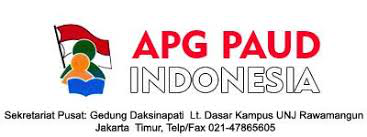Meningkatkan Keterampilan Sosial Anak dengan Autism Spectrum Disorder (ASD) dengan metode DIR Floortime: Systematic Literature Review
Abstract
Keterampilan sosial adalah aspek penting dalam kehidupan sehari-hari. Anak-anak dengan Autism Spectrum Disorder sering mengalami kesulitan dalam berketerampilan Sosial. Oleh karena itu, diperlukan intervensi yang efektif untuk membantu mereka mengatasi kesulitan ini. Penelitian ini bertujuan untuk mengetahui keefektifan penerapan DIR/Floortime® terhadap kemampuan Keterampilan Sosial anak ASD dan pengaruh pendekatan DIR/Floortime® terhadap kemampuan Keterampilan Sosial anak ASD. Peneliti menggunakan metode systematic literature review terhadap studi literatur 20 artikel mengenai penerapan DIR/ Floortime pada anak dengan Autism Spectrum Disorder (ASD) untuk meningkatkan keterampilan sosial. Artikel-artikel yang dipilih kemudian dianalisis secara kualitatif untuk mengidentifikasi temuan-temuan utama terkait dengan penerapan DIR/Floortime® pada anak-anak dengan ASD untuk meningkatkan keterampilan sosial. Hasil kajian diperoleh bahwa pendekatan floortime efektif diterapkan untuk mengembangkan kemampuan Keterampilan Sosial anak ASD. Rekomendasi untuk penelitian selanjutnya dapat digali lagi lebih dalam tentang faktor-faktor apa saja yang dapat memoderasi atau memediasi hubungan antara penerapan DIR/Floortime® dan peningkatan keterampilan sosial pada anak-anak dengan ASD.
Keywords
Full Text:
PDFReferences
Abazari, K., Malekpour, M., Ghamarani, A., Abedi, A., & Faramarzi, S. (2017). Impact of individual differences intervention (Floortime) based on parents’ expressed emotion on children’s social skills with high-functioning autism disorder. Majallah-i Ravanpizishki va Ravanshinasi-i Balini-i Iran, 23(3), 260–277.
Aziz, A. (2020). Pengaruh Bermain Peran (Pretend Play) Pada Anak Dengan Gangguan Spektrum Autis Terhadap Kemampuan Sosialisasi. Jurnal Jendela Bunda Program Studi PG-PAUD Universitas Muhammadiyah Cirebon, 8(1), 4–13.
Barghi, F., Safarzadeh, S., Marashian, F. S., & Bakhtiarpour, S. (2023). Effectiveness of DIR/Floor Time Play Therapy in Social Skills and Emotion Regulation of Children with Autism Spectrum Disorder. Middle East Journal of Rehabilitation and Health Studies. https://doi.org/https://doi.org/10.5812/mejrh-138491.
Chester, M., Richdale, A. L., & McGillivray, J. (2019). Group-Based Social Skills Training with Play for Children on the Autism Spectrum. Journal of Autism and Developmental Disorders. https://doi.org/10.1007/s10803-019-03892-7.
Dionne, M., & Martini, R. (2011). Floor time play with a child with autism: A single-subject study. Canadian Journal of Occupational Therapy, 78(3), 196–203. https://doi.org/https://doi.org/10.2182/cjot.2011.78.3.
Greenspan, S., & Wieder, S. (2006). The child with special needs: Anak berkebutuhan khusus. Yayasan Ayo Main!
Haven, E. L., Manangan, C. N., Sparrow, J. K., & Wilson, B. (2013). The relation of parent–child interaction qualities to social skills in children with and without autism spectrum disorders. Autism, 18(3), 292–300. https://doi.org/https://doi.org/10.1177/1362361316630881.
Henning, B., Cordier, R., Wilkes-Gillan, S., & Falkmer, T. (2016). A pilot play-based intervention to improve the social play interactions of children with autism spectrum disorder and their typically developing playmates. Australian Occupational Therapy Journal, 63(4), 223–232. https://doi.org/10.1111/1440-1630.12285.
Hess, E. B. (2013). DIR®/FloortimeTM: Evidence based practice towards the treatment of autism and sensory processing disorder in children and adolescents. International Journal of Child Health and Human Development, 6(3), 267–274.
Homdijah, O. S. (2004). PENDEKATAN FLOOR-TIME (SEBUAH PENDEKATAN DALAM PENANGANAN ANAK AUTISTIK).
Isnannisa, E. D., & Boediman, L. M. (2019). Dir/Floortime Untuk Meningkatkan Komunikasi Antara Anak Dengan Autisme Dan Ibu Dengan Profil Sensori Berbeda. Journal of Psychological Science and Profession, 3(3), 177–187. https://doi.org/https://doi.org/10.24198/jpsp.v3i3.23599.
Kargar Ghanatalnuj, M., Shahriari, M., & Tajali, P. (2023). Designing and Developing a Combined Program based on the Theory of Mind Method and the Floortime Method and its Effectiveness on Social-Communication Skills and Stereotypical Behaviors of Children with Autism Disorder. Journal of Applied Family Therapy, 4(3), 410–424. https://doi.org/10.22034/AFTJ.2023.350968.1690.
Kirana, E., Atmodiwirjo, E. T., & Basaria, D. (2018). Penerapan DIR Floortime Pada Anak Dengan Autism Spectrum Disorder Untuk Meningkatkan Kemampuan Sosial. Jurnal Psibernetika, 11(2), 133–144.
Lal, R., & Chhabria, R. (2013). Early Intervention of Autism: A Case for Floor Time Approach. Recent Advances in Autism Spectrum Disorders, 1. https://doi.org/10.5772/54378.
Liao, S.-T., Hwang, Y.-S., Chen, Y.-J., Lee, P., Chen, S.-J., & Lin, L.-Y. (2014). Home-based DIR/FloortimeTM Intervention Program for Preschool Children with Autism Spectrum Disorders: Preliminary Findings. Physical & Occupational Therapy In Pediatrics, 34(4), 356–367.
Manning, J., Billian, J., Matson, J., Allen, C., & Soares, N. (2021). Perceptions of families of individuals with autism spectrum disorder during the COVID-19 crisis. Journal of autism and developmental disorders, 51(8), 2920-2928.
Matheson, R. C. (2016). DIR Floortime Therapy. LC Journal of Special Education, 12(1), 2.
Maulita, T., & Karmila, M. (2018). Pengaruh Metode Bermain Peran Mikro Terhadap Kemampuan Berbicara Anak Di TK-KB-TPA Daqu School Semarang Tahun Ajaran 2017/2018. PAUDIA: Jurnal Penelitian Dalam Bidang Pendidikan Anak Usia Dini, 7(1).
Mercer, J. (2017). No TitleExamining DIR/FloortimeTM as a treatment for children with autism spectrum disorders: A review of research and theory. Research on Social Work Practice, 27(5), 625–635. https://doi.org/https://doi.org/10.1177/1049731515583062
Mirzakhani, N., Asadzandi, S., Ahmadi, M. S., Saei, S., & Pashmdarfard, M. (2022). The effect of Son-Rise and Floor-Time programs on social interaction skills and stereotyped behaviors of children with Autism Spectrum Disorders: a clinical trial. Cadernos Brasileiros de Terapia Ocupacional, 30. https://doi.org/10.1590/2526-8910
Praphatthanakunwong, N., Kiatrungrit, K., Hongsanguansri, S., & Nopmaneejumruslers, K. (2018). Factors associated with parent engagement in DIR/Floortime for treatment of children with autism spectrum disorder. General Psychiatry, 31(2).
Radley, K. C., Jenson, W. R., Clark, E., Hood, J. A., & Nicholas, P. (2014). Using a Multimedia Social Skills Intervention to Increase Social Engagement of Young Children With Autism Spectrum Disorder. 2014, 50(1), 22–28. https://doi.org/10.1177/1053451214532350
Rizki, A. N. (2017). Profil Keterampilan Sosial Anak Autistik di Sekolah Penyelenggara Program Inklusi (SPPI) Kota Yogyakarta. WIDIA ORTODIDAKTIKA, 6(2), 184–193.
Rohmawati, A., & Ardianingsih, F. (2020). Pendekatan Floor Time Untuk Keterampilan Sosial. Jurnal Pendidikan Khusus, 16(1).
Sari, A., & Sagala, A. C. D. (2013). Upaya Meningkatkan Kecerdasan Emosi Anak Melalui Bermain Peran Pada Kelompok B Tk Dharma Wanita Tampingan Kabupaten Kendal Tahun Pelajaran 2013/2014. PAUDIA: Jurnal Penelitian Dalam Bidang Pendidikan Anak Usia Dini, 2(2).
Solomon, R., Van Egeren, L. A., Mahoney, G., Huber, M. S. Q., & Zimmerman, P. (2014). PLAY Project Home Consultation intervention program for young children with autism spectrum disorders: A randomized controlled trial. Journal of Developmental and Behavioral Pediatrics, 35(8), 475. https://doi.org/10.1097/DBP.0000000000000096
Stanton-Chapman, T. L., & Brown, T. S. (2014). A Strategy to Increase the Social Interactions of 3-Year-Old Children With Disabilities in an Inclusive Classroom. Topics in Early Childhood Special Education, 35(1), 4–14. https://doi.org/10.1177/0271121414554210
Sumiwi, M. E. (2022). Autisme A-Z Webinar Peringatan Hari Peduli Autisme Sedunia 2022. https://kesmas.kemkes.go.id/konten/133/0/autisme-a-z-webinar-peringatan-hari-peduli-autisme-sedunia-2022. Diakses pada tanggal 2 April 2024.
Thayer, F. C. (2016). Evaluation of a developmental individualized relationship (DIR®) and creative arts therapies program for children with autism. Lesley University.
Tilmont Pittala, E., Saint-Georges-Chaumet, Y., Favrot, C., Tanet, A., Cohen, D., & Saint-Georges, C. (2018). Clinical outcomes of interactive, intensive and individual (3i) play therapy for children with ASD: a two-year follow-up study. BMC Pediatrics, 18(1), 1–13. https://doi.org/https://doi.org/10.1186/s12887-018-1126-7
Ulfah, I. M. (2015). Keterampilan Sosial Peserta Didik Autis di Sekolah Inklusif. Jurnal Pendidikan Khusus, 7(4).
Wang, J., Ma, B., Wang, J., Zhang, Z., & Chen, O. (2022). Global prevalence of autism spectrum disorder and its gastrointestinal symptoms: A systematic review and meta-analysis. Frontiers in Psychiatr, 13. https://doi.org/https:// doi.org/10.3389/fpsyt.2022.963102
Widuri, R. W. (2013). Penanganan kemampuan Keterampilan Sosial anak autis. Jurnal Pendidikan Khusus, 3(3).
Wieder, S., & Greenspan, S. I. (2003). Climbing the symbolic ladder in the DIR model through floor time/interactive play. Autism, 7(4), 425–435. https://doi.org/https://doi.org/10.1177/1362361303007004008
Zeidan, J., Eric, F., Scorah, J., Ibrahim, A., Durkin, M. S., Saxena, S., Yusuf, A., Shih, A., & Elsabbagh, M. (2022). Global prevalence of autism: A systematic review update. Autism Research, 15(5), 778–790. https://doi.org/https://doi.org/10.1002/aur.2696
DOI: https://doi.org/10.21107/pgpaudtrunojoyo.v11i1.25103
Refbacks
- There are currently no refbacks.
Copyright (c) 2024 Riza Fajriyati, Heny Djoehaeni, Nur Faizah Romadona

This work is licensed under a Creative Commons Attribution 4.0 International License.
Diterbitkan oleh:

Program Studi Pendidikan Guru Pendidikan Anak Usia Dini, Fakultas Ilmu Pendidikan
Universitas Trunojoyo Madura.
Jl. Raya Telang PO BOX 2 Kamal, Bangkalan, Jawa Timur 69162
Telp. (031)3014239/ Fax. (031)3011506









